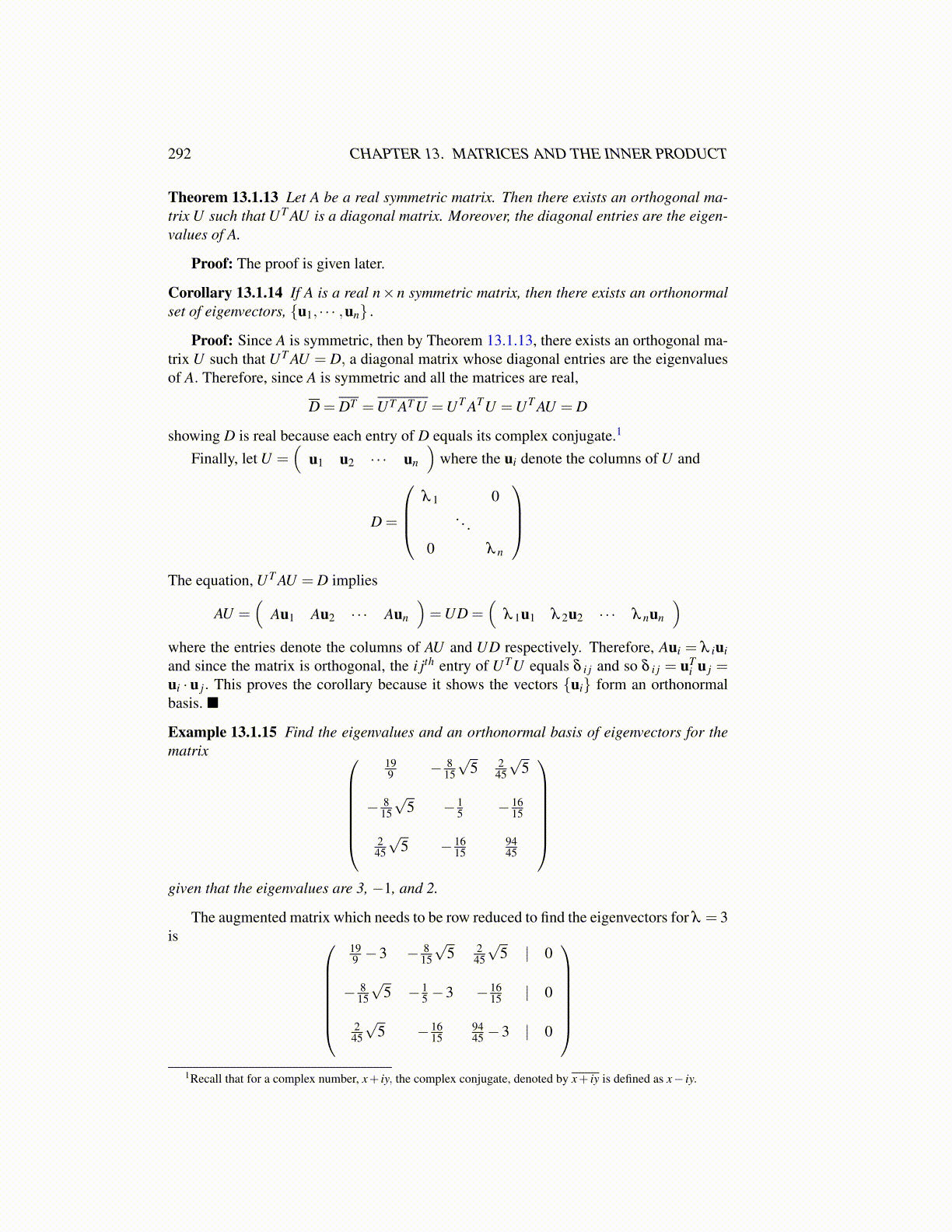
292 CHAPTER 13. MATRICES AND THE INNER PRODUCT
Theorem 13.1.13 Let A be a real symmetric matrix. Then there exists an orthogonal ma-trix U such that UT AU is a diagonal matrix. Moreover, the diagonal entries are the eigen-values of A.
Proof: The proof is given later.
Corollary 13.1.14 If A is a real n×n symmetric matrix, then there exists an orthonormalset of eigenvectors, {u1, · · · ,un} .
Proof: Since A is symmetric, then by Theorem 13.1.13, there exists an orthogonal ma-trix U such that UT AU = D, a diagonal matrix whose diagonal entries are the eigenvaluesof A. Therefore, since A is symmetric and all the matrices are real,
D = DT =UT ATU =UT ATU =UT AU = D
showing D is real because each entry of D equals its complex conjugate.1
Finally, let U =(
u1 u2 · · · un
)where the ui denote the columns of U and
D =
λ 1 0
. . .
0 λ n
The equation, UT AU = D implies
AU =(
Au1 Au2 · · · Aun
)=UD =
(λ 1u1 λ 2u2 · · · λ nun
)where the entries denote the columns of AU and UD respectively. Therefore, Aui = λ iuiand since the matrix is orthogonal, the i jth entry of UTU equals δ i j and so δ i j = uT
i u j =ui · u j. This proves the corollary because it shows the vectors {ui} form an orthonormalbasis. ■
Example 13.1.15 Find the eigenvalues and an orthonormal basis of eigenvectors for thematrix
199 − 8
15
√5 2
45
√5
− 815
√5 − 1
5 − 1615
245
√5 − 16
159445
given that the eigenvalues are 3, −1, and 2.
The augmented matrix which needs to be row reduced to find the eigenvectors for λ = 3is
199 −3 − 8
15
√5 2
45
√5 | 0
− 815
√5 − 1
5 −3 − 1615 | 0
245
√5 − 16
159445 −3 | 0
1Recall that for a complex number, x+ iy, the complex conjugate, denoted by x+ iy is defined as x− iy.